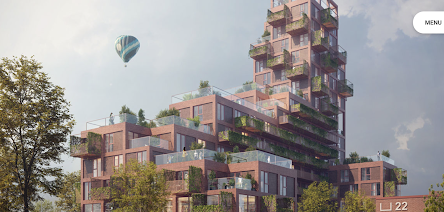 |
| Media coverage with police inspector Jonas Berg, a SafeGrowth participant, during the introduction of SafeGrowth into Helsingborg, Sweden |
by Gregory Saville
It is always difficult to know when a good idea in one place is a good idea in another. Some things, like vaccines or mobile phones, transport easily from one culture to another. Covid vaccines from a few countries are now deployed all around the world in all countries and, thankfully, they save billions of lives for those wise enough to take them.
What about neighborhood programs in crime prevention?
Over the past year and a half myself and some of our talented SafeGrowth experts have been working in Helsingborg, Sweden to help residents and officials craft SafeGrowth to their city. It all began two years ago when I delivered a keynote address to the H22 Smart City Expo – a Swedish event to announce their 2022 world exposition of all things futuristic and technological in 21st Century cities.
 |
| SafeGrowth training workshops in Helsingborg, Sweden |
SMART CITIES
The Smart City movement is the amalgam of Artificial Intelligence and high technology to all aspects in the operation of city life. My point was that you cannot have a Smart City if you do not have a Safe City.
SafeGrowth training began last year with local neighborhood Engagement Coordinators who, under the on-scene leadership of SafeGrowth expert Mateja Mihinjac, learned the model and began testing it themselves. With the help of our newest SafeGrowth star – Iman Abbas, who is based in Helsingborg – high school students conducted SafeGrowth fear and perception GPS mapping. Then, over the past few months, I worked with Iman and Mateja to train three teams of residents and city officials from the neighborhood of Drottninghög (I’m still practicing my Swedish pronunciation).
This past week the three teams delivered their plans for moving forward to dozens of officials, residents, and students attending their presentations.
What an outstanding event! I was witness to fantastic audience response. I saw broad smiles on the faces of the Drottninghög SafeGrowth graduates as they presented the success of their hard work over the past months.
 |
| Screenshot from the H22 Helsingborg Smart City Expo |
CO-CREATING SAFE PLACES
Drottninghög now has a number of plans for safety and community engagement in different parts of the neighborhood – some projects involving placemaking around a community garden and others focused on building social cohesion between the immigrant population and Swedish residents.
Their project style included residents working alongside officials and experts. This is appropriate since the H22 Expo theme assigned to Drottninghög is ‘co-creation’ They produced a video describing their co-creation philosophy.
They are now embarking upon months of further planning as they begin to implement their plans. They want to expand their work to more projects in their community and now there is a discussion about expanding their work to other neighborhoods.
 |
| New development projects and innovative lighting programs are already underway in Helsingborg |
HELSINGBORG & THE CPTED CONFERENCE
Next week the Helsingborg SafeGrowth teams will present their preliminary work at the International CPTED Association virtual conference co-sponsored by Helsingborg. Their presentations are viewable to conference participants on Wednesday, Nov 3 at 3:45 PM Swedish time (11:45 AM Eastern Standard Time).
Next year, they will present their results to the world at the H22 Smart City Expo in Helsingborg. Well done to our Helsingborg friends. These are exciting times in Sweden!









